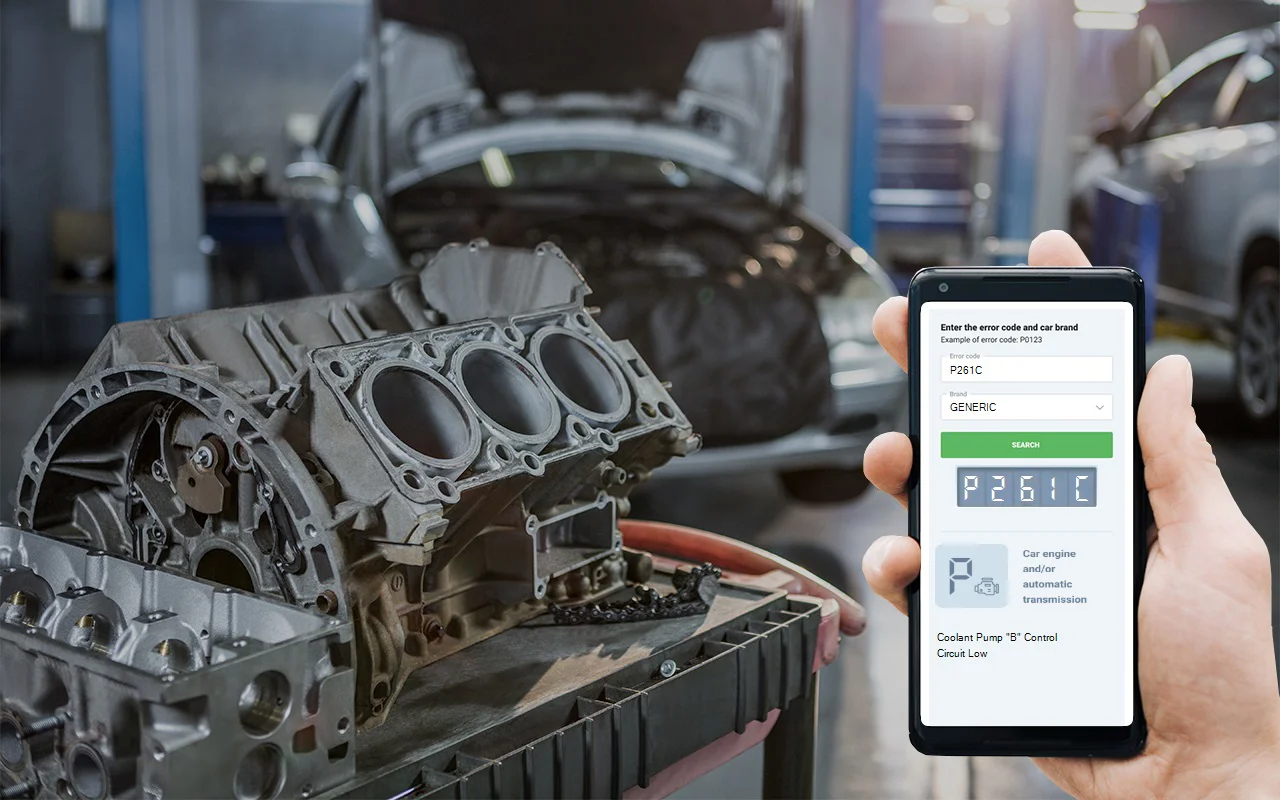When you see the code P261C pop up, your car's computer-whether it's a PCM or ECM-is letting you know there's trouble in the control circuit for what's called the "Coolant Pump B." Now, in plain shop talk, this pump works alongside your main cooling system to keep your engine temps from creeping too high, especially after a hard run or when you shut the engine down hot. What I've noticed over the years is that if the computer notices the signal from this pump is lower than expected, it throws this code. I’ve run into this issue a fair bit, particularly on Toyotas and Volkswagens. In every case, it’s pointing right at an electrical hiccup in the circuit running the secondary coolant pump. Ignore it, and you’re flirting with the chance of an overheated motor-which, trust me, is never a cheap fix.
DTC P261C
Causes of P261C
From experience, the most common reasons for seeing a P261C code are pretty similar across Toyota and Volkswagen models. Here’s what I usually find:
- A faulty coolant pump relay-this is the switch that tells the pump when to turn on and off.
- A bad or failing coolant pump itself-sometimes the motor inside just gives out.
- Wiring harness issues-open or shorted wires can break the connection.
- Poor electrical connections-corrosion, loose pins, or damaged connectors at the pump or relay can cause trouble.
It’s almost always an electrical problem somewhere in that circuit, so that’s where I’d start looking first.
Symptoms and P261C engine code
If you’re dealing with a P261C, the check engine light is usually the first sign that something’s up. You might spot a warning light for high engine temperature or get a message about your cooling system. Oddly enough, the car often drives just fine in the early stages, so it’s easy to ignore. But here’s the catch: if that pump isn’t moving coolant, your engine’s going to run hotter than it should-especially when you’re stuck in traffic or after you’ve turned off the ignition. Keep pushing your luck, and you’ll almost certainly end up with an overheated engine and the headaches that follow.

Diagnosis process for obd code P261C
This is the approach I’ve honed over the years when tracking down a P261C:
- Start with a good old-fashioned visual check. Pop the hood and take a hard look at the wiring and connectors at both the pump and its relay. Frayed wires, corrosion, or anything out of the ordinary should jump out at you.
- Don’t overlook the connectors. Bent or corroded pins, loose fitments-these tiny things can cause major headaches. Give each plug a gentle tug and make sure everything’s solid.
- Next up, the relay. Here’s a pro-tip from the garage: if there’s an identical relay in the fuse box, swap them and see if the problem follows. Saves a lot of guesswork.
- If the relay seems fine, break out your multimeter. Check for power and ground at the pump connector. If you’re not comfortable with electrical work, don’t be shy about asking for help-it’s better than frying something accidentally.
- Got power and ground, but the pump still won’t kick on? Odds are the pump itself is toast.
Once you’ve done your repairs, always clear the code and see if it returns. Sometimes, a simple loose connection is all it takes to set this code off.

Common Mistakes with P261C trouble code
A classic mistake I see all the time is folks going straight for a new coolant pump without checking the relay or the wiring harness first. That’s a quick way to throw money at a problem that could have been solved for the price of a connector cleaning. Another one-overlooking the connectors altogether. Corrosion or a loose pin can be sneaky, but they’ll cause big trouble if you don’t catch them. Always start with the basics before reaching for your wallet.

Seriousness of dtc P261C
Let me be blunt: this isn’t a code to ignore or put off for another day. If your secondary coolant pump isn’t doing its job, your engine’s at risk of overheating-and that’s as serious as it gets. I’ve seen engines cooked to the point of head gasket failure, warped heads, or even total engine replacement. Trust me, those repair bills aren’t pretty. The damage can extend beyond the engine, too-think radiators and even catalytic converters if things get too hot. Don’t gamble with this one.
Repair options for P261C code
Most of the time, fixing this code comes down to one of these:
- Patch up or replace any wiring or connectors that look worse for wear at the pump or relay.
- Drop in a new relay if the original checks out bad.
- If all else fails and the pump’s dead, time for a replacement pump.
- Clean and lock down every single electrical connection in that circuit.
My advice? Start with the simple stuff-the wiring and relays-before shelling out for a new pump. And never forget to double-check your work and clear the code to make sure your fix holds.
Conclusion
Bottom line: P261C means your car’s computer isn’t happy with the signal it’s getting from the secondary coolant pump, usually because of an electrical issue. Don’t brush it off-overheating can wreck your engine before you know it. Start your troubleshooting with a careful look at the wiring and relay, then move on to the pump if needed. Jump on this early, and you’ll save yourself a world of future headaches and expensive repairs.




